News and Tools for
Happiness, Love, and Wisdom
volume 13.4 • 2019
In This Issue
Stoicism and Vicarious Trauma: An exploration of ancient wisdom’s relevance for modern times
© 2018 Ruth Crowley Brown
Having a label to summarize an experience that is difficult to put into words can be therapeutic. Before the term Post-Traumatic Stress Disorder entered our vocabulary, it was much harder to recognize and address the psychological symptoms associated with traumatic experiences. Vicarious Trauma, another modern term, refers to the symptomatic thoughts, feelings, and behavior(s) that adversely affect our well-being, and whose origins often fly under the radar. Vicarious Trauma has been defined as: “the negative transformation in the helper that results (across time) from empathic engagement with trauma survivors and their traumatic material, combined with a commitment or responsibility to help them” (Pearlman and Caringi, Blue Knot Foundation). Indicators include: intrusive thoughts, excessive rumination that feels out of our conscious control, insomnia and anxiety, issues with patterns of eating (from skipping meals to comfort eating) and generally feeling low, irritable, and depleted. In addition, in terms of relating to clients and peers, we may feel under pressure regarding our professional boundaries, and find ourselves oscillating between over-involved/too close and under-involved/disconnected, or feeling stuck in one or the other of those limiting positions.
That emotions are “contagious” has been documented by neuroscience and psychoanalysis: the former in the exploration of mirror neurons, and the latter in the elaboration of the therapeutic transference. In everyday life we constantly pick-up on feelings from others - a sharp or distracted remark at home or at work can affect our mood, sometimes more than feels rational. Relationships with clients, which usually involve a high degree of commitment, are bound to have a marked impact.
The casework/therapeutic relationship involves a number of aspects - from bearing witness to the client’s painful emotional journey as they work through the grief associated with their trauma, to representing their interests (where appropriate) within the matrix of agency/government bureaucracy. Also, and perhaps more importantly, utilizing the interpersonal psychodynamic relationship to offer emotional holding and support, which in turn facilitates healing and integration, requires considerable “emotional labor” from the therapist.
Furthermore, there is the additional risk that any emotional correspondences, however vague, may trigger unresolved personal issues that have been lying low in the therapist’s own unconscious mind. This potential “double whammy” can institute brittle psychological defenses but also enhance empathy (albeit via identification). As seen here in various case studies, practitioners must often navigate these complex emotional landscapes while simultaneously managing the needs of their clients. The inner work required by practitioners to process such complexity and intensity can be significant, demanding both high-level internal skills (see below) and external resources, such as good supervision and peer support.
Growth and change for anyone – be they therapist or client – can be challenging, largely because human functioning is rooted in habit, which can be seen as, paradoxically, humanity’s greatest vulnerability as well as our greatest strength. Once a skill has been mastered it becomes automatic – saving us prime mental real estate to think about other things. But given that many of our key skills are learned during childhood (when our autopilot is shaped and colored by that time and place) inner conflicts can emerge between old habits and current needs, with old habits often winning out because they’ve become “automatized” and operate from deep within the neural networks of our unconscious mind. Sometimes these old “dinosaur” habits need updating or replacing if we are to truly thrive.

Stoicism and Cognitive Behavioral Therapy
There has recently been a resurgence of interest in some therapy circles in the ancient Greek philosophy of Stoicism that arose around 300BCE (the founding fathers of modern Cognitive Behavioural Therapy (CBT), Albert Ellis and Aaron T Beck, both attributed Stoic philosophy as a significant influence). Following Socrates, the Stoics believed that an “examined life” was crucial to countering akrasia – the ancient word for a “failure of the will.”
CBT revolutionized mental health treatment in the late twentieth century, partly by shifting perspective from content to process – in other words from what we’re thinking about (such as ruminating about particular dilemmas) to how we’re thinking (for example, recognizing when we’re being caught in a cognitive distortion such as “catastrophizing”). A similar shift in mental perspective was advocated by the Stoics. According to the French philosopher Pierre Hadot in Philosophy as a Way of Life, the Roman Emperor Marcus Aurelius implicitly elaborated a threestage Stoic method of self-exploration (akin to emotional journaling) in his second century AD Meditations.

A Stoic’s Approach to Self-Exploration
The Stoic’s first stage - the discipline of judgement - involves recognizing that the thoughts which automatically arise in our heads are not facts, but rather impressions, and should therefore be treated as hypothetical and potentially untrustworthy. This radical idea (that you can’t believe everything you think) is the same as CBT’s formulation of automatic thoughts that arise without conscious intent, and are attached to higher order cognitive distortions.
The second stage - the discipline of relating to natural causation - involves establishing exactly what is, and is not, within our personal control. The Stoics called this “dichotomy of control”
Greetings
The Wise Brain Bulletin offers skillful means from brain science and contemplative practice – to nurture your brain for the benefit of yourself and everyone you touch.
The Bulletin is offered freely, and you are welcome to share it with others. Past issues are posted at http://www.wisebrain.org/tools/wise-brain-bulletin.
Rick Hanson, PhD, edits the Bulletin. Michelle Keane is its managing editor, and it’s designed and laid out by the design team at Content Strategy Online.
To subscribe, go to http://www.wisebrain.org/tools/wise-brain-bulletin.
(modern day psychologists refer to an internal or external “locus of control”). The Stoics concluded that the only thing that we can really control is our relationship to our own thoughts, feelings, and behavior. We can’t control the behavior of others, including clients or even close family members (with the exception perhaps of children of a certain age and temperament). Similarly, even our physical health is largely beyond our control (though a commitment to healthy living can make a difference). Substantial investment in external things, over which we have no direct control, therefore leads inexorably to misery, and the Stoics promoted developing an attitude of a “benign indifference” to such matters. This approach has obvious correspondences with the Serenity Prayer: God grant me the serenity to accept the things I cannot change, the courage to change the things I can, and the wisdom to know the difference.
The third stage - the discipline of action - involves consciously deciding how to live one’s life by identifying specific “virtues” to follow. Rather than the ad hoc psychological inheritance from our family-of-origin or blindly following our passions or instincts – the Stoics believed that reasoningout virtuous guidelines to follow in the present moment lead to a more rational approach to life.
Four key Stoic virtues – courage, temperance, wisdom and justice – fall into three categories: emotional, cognitive and relational:
(i) Courage and Temperance: courage requires pushing forward in spite of feeling anxious, not letting fear hold one back; and temperance (or moderation) involves calming angry emotions, and expressing oneself without becoming defensive (e.g. using assertive communication rather than blaming and aggression).
(ii) Wisdom: involves learning from experience, self-knowledge and knowing one’s limits and capabilities (as in the Delphic oracle’s “Know Thyself”).
(iii) Justice: involves honesty and integrity, empathy, and a win/win mindset (it’s no coincidence that ancient Greece was the birthplace of democracy). Such inner deliberations can establish new default psychological templates for how to live a good life.

Before journeying deeper into the heart of Stoic strategies, let’s briefly reflect on the context. The ancient Greek philosophical academies were, surprisingly, structured more like monasteries than universities, as members needed to retreat from everyday life in order to develop the discipline to practice their new way of living. This was because these ancient Greeks also understood the challenge involved in changing long-established mental schemas. Stoicism actually stood out from its contemporaries (such as Epicureanism) because it was more open; rather than keeping their esoteric knowledge completely behind closed doors, Stoics sometimes met “under the porch” (stoa being the ancient Greek word for porch). But a high level of intensity and commitment was still required to achieve sustainable change
Stoicism and Mindfulness
Stoics aimed to develop two different skill sets which both hinged upon cognition (deliberate thinking) taking the lead role in functioning, by means of sustained conscious intention.
The first skill set involved actively engaging with mental processes to change behavior (as we’ve seen above with the three stages/disciplines). The following examples all draw on the imagination:
(i) Viewing from above to gain perspective on dilemmas by seeing oneself more objectively (from a distance in space how small we seem; how will this seem in 10 years’ time?). The idea here is that, rather than having a straight forward perception of an objective reality, we recognize that our experience is based on our own unique, subjective take on life, including its roots in the past.
(ii) Imagining what a wise Stoic sage would do in any given challenging situation (remain calm, hold on to their rationality under pressure, always be kind).
(iii) Mentally rehearsing successful future outcomes, but always with a caveat that things may not turn out as one hopes, so taking into account any eventuality that may arise (be prepared, but don’t put all your eggs in one basket).
(iv) Tuning in to Nature with an attitude of accepting “what is” - we’re not fighting with fate or what the universe has delivered to us, but rather viewing it as an opportunity for growth and learning (reframing, glass-half-full, etc.).
(v) Consideration of death by recognizing how short our time here on earth really is, making conscious efforts to not fritter it away, squander it on trivialities, or worse.
The Stoic’s second skill set is strikingly similar to the Eastern Buddhist concept of mindfulness in that it involved letting “mental phenomena” go, and focusing one’s attention on the “present instant.”
This mindful aspect of Stoic practice wasn’t picked up on by CBT’s Ellis or Beck, perhaps because the idea of mindfulness was counter-cultural in the West at that time (the 1950s): it certainly wasn’t taught in University philosophy departments. However, Hadot was an exception, and it was his close reading/interpretation of the ancient texts that revealed the mindful nature of the Stoic spiritual exercises. In fact, the texts from ancient Greece and Rome came to modernity via a very circuitous route indeed - after the fall of the Roman Empire, they survived a long hiatus during Medieval times, before their rediscovery by Europeans (albeit in fragments, and often in the form of Arabic translations) a thousand years later, during the Renaissance.

Mindfulness can actually be seen as the polar opposite of active mental engagement; instead it involves releasing mental impressions and returning attention to the present moment. Whereas Buddhist practice often uses a mantra (word, sound or object) as a point of focus to keep returning to, the spiritual teacher Eckhart Tolle’s method of actively cultivating conscious awareness by tuning in to the universe by means of present-moment sensory appreciation may be more similar to the ancient Stoic’s spiritual exercises. Furthermore, the Stoics devised pithy aphorisms as mnemonics, which they advised to always keep “ready-to-hand” – they knew that constant reminders were necessary to swim upstream against the deep-seated power of ingrained habit.
Keep hold of this alone and remember it: each one of us lives only now, this brief instant. –Marcus Aurelius.
Using Mindfulness and Cognition to Mitigate the Effects of Vicarious Trauma
Perspectives on Self-Care
Be careful with all self-help methods (including those presented in this Bulletin), which are no substitute for working with a licensed healthcare practitioner. People vary, and what works for someone else may not be a good fit for you. When you try something, start slowly and carefully, and stop immediately if it feels bad or makes things worse.
Mindfulness practice isn’t about deciding to disengage with negative thoughts and engage with positive ones, though this can be a useful exercise. Rather, it’s about developing the mental muscle to be able to detach from mental representations per se so that we have the choice to mentally engage or disengage at will, rather than feeling at the mercy of our automatic thoughts or passions.
Given the increase in positive outcomes as a result of adding the practices of Eastern mindfulness to modern cognitive therapy models, perhaps we can assume that Stoicism lasted for so many centuries because it too was beneficial in cultivating lasting, beneficial change for its practitioners. Its eventual dissolution into early Christianity, around the fourth century AD, followed the rise and domination of monotheism. Yet the extent to which ancient wisdom, from the East and the West, has contributed to modern psychological treatments can feel surprising in modern times – demonstrating perhaps that some basic human needs haven’t changed so much after all.
In conclusion, combining active mental processes and strategies with mindfulness practice (in tandem with external support) can go a long way towards combating the insidious effects of vicarious trauma. Conditions can be created to hone current skills, and master new ones, though – like the difference between slipping-on comfortable old worn-out sneakers, and wearing-in smart new quality shoes – perseverance and patience is required. But improvements in both personal well-being and professional practice will amply reward the investment.
ABOUT THE AUTHOR
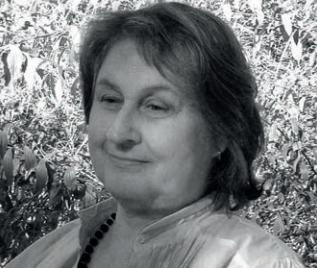 Ruth Crowley Brown is a psychotherapist, social worker and writer. She has worked in London, England, and Brisbane, Australia in Child and Adolescent Mental Health, Domestic and Family Violence, Foster Care, and with Refugees, and Aboriginal and Torres Strait Islanders. She’s also a longtime practitioner of Vipassana meditation and the Alexander technique.
Ruth Crowley Brown is a psychotherapist, social worker and writer. She has worked in London, England, and Brisbane, Australia in Child and Adolescent Mental Health, Domestic and Family Violence, Foster Care, and with Refugees, and Aboriginal and Torres Strait Islanders. She’s also a longtime practitioner of Vipassana meditation and the Alexander technique.
The Morning Sun
© 2016 David Carnes
The morning sun blinds me
Reds and yellows bloom through closed eyes
The light warms my face
The corners of my lips turn up
My eyebrows brush the sky
My toes twist around roots and dead things
I am cracked, radiant and heartbroken
Shining back at the sun
Giving as good as I’m getting
ABOUT THE AUTHOR
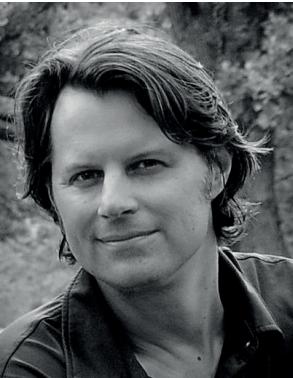 David Carnes is a long time meditator, musician, entrepreneur and writer. This poem is taken from a collection of poems chronicling his experiences during a period of intensive meditation practice. He lives and works in Minneapolis Minnesota where he serves as CEO for the digital agency, ArcStone. If you’re interested in reading the entire
booklet of poems from which this one is taken, it is available freely as a downloadable PDF at www.spinningplates.com/2018/02/bright-pin.
David Carnes is a long time meditator, musician, entrepreneur and writer. This poem is taken from a collection of poems chronicling his experiences during a period of intensive meditation practice. He lives and works in Minneapolis Minnesota where he serves as CEO for the digital agency, ArcStone. If you’re interested in reading the entire
booklet of poems from which this one is taken, it is available freely as a downloadable PDF at www.spinningplates.com/2018/02/bright-pin.
The Sisyphus in Each of Us
© 2018, Radhule Weininger, MD, PhD
In these unpredictable and perilous times many of us look aghast at the Trumpian world and right-wing movements across the globe and experience feelings of heightened anxiety, fear and even dread. As we continue to feel bombarded by news of chaos, aggression and danger, it is difficult to maintain an attitude of presence and caring. It seems all too easy to either despair, tune out, or become numb to feelings of concern for others and our world.
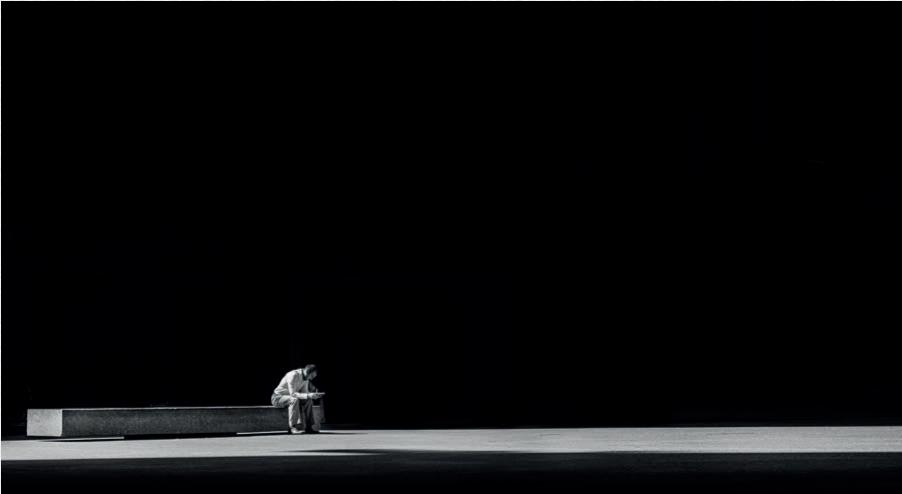
A 2018 study reports that teen-age suicide has risen over 30% over last few years. We have an existential crisis in our country, in which meaning and purpose are put into question. What values do we offer the young people amongst us, which make it meaningful and enticing to be part of our culture and communities? The philosopher Frederic Nietzsche told us: “He who has a why to live can bear almost any how.” Questions about meaning voiced by my young clients include: “What is the purpose and significance of my life?” “What is meaningful and valuable nowadays?” “What am I here for?” Sarah, who is 21, told me: “It seems that I am pushed to achieve more and more, just so I can buy stuff in the end.” Jose, a Dreamer, who came to the States at age four with his mother, told me: “It seems nobody wants me or my relatives here, there is no place or purpose for me.”
Sarah and Jose are experiencing a crisis of meaning. Jose feels left out and unsupported, and Sarah sees her efforts and contributions as not making sense. Another client, Tony, agonizes about the ever-increasing threat of climate change: “Why should I go to college and work, when big parts of our world may be uninhabitable in a decade or two? This is no place to have a future.” (Tony had been referred to me by his school counselor because of excess marijuana and alcohol use.) Maya, who is 24, says: “I do not want to live in a world where people don’t care for each other, where everybody is out for their own advantage.”
Meaning in life is established when we have a valuable, purposeful place in a world in which we belong and with which we are interconnected. Victor Frankl, the psychiatrist who survived the Nazi death camps, pointed out that having meaning in life allows us to fare better in times of great stress. Therefore, I ask how we can promote attitudes that help us to embrace current reality with sensitivity and aliveness, while maintaining the will to make our world a better place?
I have been looking for examples from our philosophical and spiritual past, searching for those who found a way to stay engaged in the face of adversity. Sisyphus, the Greek hero, who was condemned by the Gods to do an arduous task for eternity, came to mind almost immediately. Each day he struggled to roll a huge stone to the top of a mountain only to watch it roll back down on its own weight. Some see Sisyphus as the quintessential sufferer, condemned to repeating hopeless and meaningless toil.
The Wellspring Institute For Neuroscience and Contemplative Wisdom
The Institute is a 501c3 non-profit corporation, and it publishes the Wise Brain Bulletin. The Wellspring Institute gathers, organizes, and freely offers information and methods – supported by brain science and the contemplative disciplines – for greater happiness, love, effectiveness, and wisdom. For more information about the Institute, please go to http://www.wisebrain.org/wellspring-institute.
If you enjoy receiving the Wise Brain Bulletin, please consider making a tax-deductible donation to the Wellspring Institute. Simply visit WiseBrain.org and click on the Donate button. We thank you.
Like the mythic Sisyphus, many of us harbor suspicions that the stones we push up the mountain are bound to roll to the bottom once again. Many of us worry that our acts of engagement may be in vain. Several of my socially or politically inclined friends worry that canvasing, participating in protests, and working in activist groups will be futile. They find that with each polarizing and meanspirited executive order, with each new law favoring the rich and powerful, they are left feeling more powerless and defeated.
One of the most well-known writers to interpret the myth of Sisyphus is the existentialist Albert Camus. Camus wrote for post-WWII Europe when there was a different yet comparable existential crisis playing itself out. People in Europe were demoralized after the devastating war and many young people were appalled by the rising economic consumerism and re-militarization. Just a few decades after the war had ended, this flight into superficiality took over. There was hardly any cultural awareness of what had happened just a few years earlier and why and how new value in life could be found.
Today we see a rise of nationalism, an intolerance toward immigrants and refugees, and an indifference towards those in our society who are the most vulnerable. Polarization splits our society, pitting one group against the other. While consumption is offered as a substitute for meaning, the problems of our feuding society can feel like huge boulder which we don’t know how to handle. Are we to be defeated by this huge boulder, which we have to roll up the mountain over and over again, or is there another way to respond to this conundrum?
Camus proposes an alternate and inspiring view of Sisyphus and his task. In The Myth of Sisyphus he sees the absurd hero as the one who defies the gods because they have abused their power. Sisyphus’ punishment for speaking out against injustice is to muscle the stone up the steep mountain over and over again, forever. In Camus’ interpretation, Sisyphus is well aware of his situation, including what led up to it as well as what his future will be. According to Camus, Sisyphus pushes his stone forward with an attitude of knowing, dignity and even joy, choosing to be present to his task. Knowing that he has no choice other than to shove the stone up the tall and steep mountain again and again, he makes the mental choice remaining to him to replace sorrow with joy
I see Sisyphus as deeply present with what is. What he chooses to do is not arbitrary or accidental, but a life affirming response to suffering.
In a holographic reality, the whole is detected within the part, as the part lives within the whole.
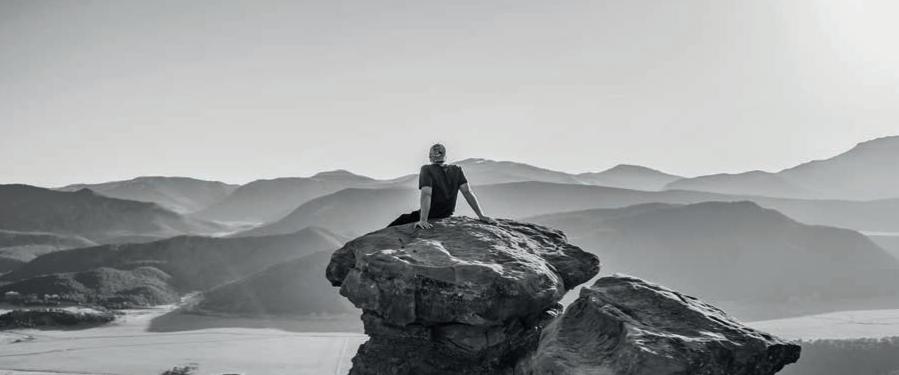
Sisyphus realizes that in tending to the immediate situation (perhaps his hurting back or his aching thighs), he is in fact tending to the part that helps to make up the whole. Camus writes: “…each atom of that stone, each mineral flake of that night-filled mountain, in itself forms a world.” Thus, he argues that separateness is an illusion, and that all is interconnected. This truth can be sensed in mystical experiencing. In engaging with his challenge with an expended awareness, Sisyphus moves toward an attitude of kindness and increased presence, engaging in his task (a version of which is shared by all of us) in a new way.
In the face of the tension and confusion that I detect within myself, my clients, my students, and society as a whole, I feel myself drawn to reflect on the stone and Sisyphus’ relationship to it. I keep coming back to what I hear from many people, that taking care of their own life is the best they can do. But we can and must go beyond that. We can do both, engage with the troubles of this world, and take responsibility for our individual worlds. The awareness that all is radically interconnected, that everything “inter-is,” makes a difference to how we engage. We might envision this as a feedback loop, in which an act of kindness gives us meaning, and where meaning in turn gives us the strength to engage.
I think of the many people I know, who, in the face of seemingly insurmountable obstacles, give their all to work in some small way to help the world. My friend Manny Jesus, a retired professor of psychology, ceaselessly tries to promote the wellbeing and protection of Mexican American youths as he engages in battles with city authorities. Pete, a mathematician, has developed an instrument for the early detection of habitats threatened by drought, particularly those upon which poorer populations are dependent. And there is Nancy - in anguish about the fate of future generations, she and seven other mothers get together while their children are in school to write letters to congressmen about healthcare, education and the environment. These actions provide meaning and perseverance.
When I think of the enormous problems that we are facing, I believe we have to consider and respect our “human condition.” When I reflect on us as human beings, I think about the first homo sapiens living in the Savannahs deep inside Africa. I imagine small groups of people attempting to survive a hostile environment full of disease and death. If one in the small crowd was vulnerable or cast out for some reason, this person would surely be rapidly devoured by predators. This is ultimately why primal anxiety leaves us humans with a terrifying fear of being excluded, criticized, or otherwise cast out. No wonder we want to attach to family, group, country, or ideology. Yet, attachment easily brings suffering, especially if, as the Buddha teaches, wholesome connectedness contorts into grasping, clinging, or rejecting. There is an inherent underlying suffering at the core of human nature, which is released to the surface when we do not feel safe, loved, and/or protected.
Such reflection may help us to understand why so many who resort to nationalism or “America first” reject those who are different. Unknowingly, they may be experiencing a great fear of sudden change. They may be left feeling un-rooted, while rapid globalization is likely to have caused many to fear a loss of place, value, and tradition. Speedy cultural changes in our society can erode a sense of tradition and of predictability. Unconscious fear leads to the development f “Terror Management Processes.”

Social psychologists Solomon, Greenberg, and Pysczynski propose that we, in order to buffer ourselves from the unbearable awareness of our finite nature (an awareness heightened by the visible dangers to life posed by climate change) instinctively build individual fortresses of wealth, power, and identity. Feeling ourselves as part of this “symbolic immortality” gives us a sense of protection from this fear. When something comes along that undermines this feeling of security and threatens us with an unconscious fear of annihilation, we try to find external solutions, such as circling our wagons or attacking a minority group. Looking down on the “other” gives many the unconscious hope that this will make them more secure, worthy, and important. However, events set in motion by this anxiety may make things worse by escalating the spiral of disconnection and fear
That is why we need awareness and compassion for ourselves and others to heal this basic human dilemma. Awareness of it allows us to understand and to empathize with what it means to be human.
How would it be if we saw Sisyphus’s stone in a fresh way? Not as the burden of one Sisyphus pushing his or her personal stone up the hill, but as the common burden belonging to all of humankind, the rough and heavy boulder of our common humanity?
How would it be if we could, with eyes wide open, embrace this human condition, deciding to carry this stone for the sake of all of us? As we begin to regard the boulder as our stone, as a common burden that we all face, we could join with a spirit of solidarity and compassion. We could see ourselves as making the choice to push this load up the steep hill so that one day, even for a moment, it might stand in the sun. Seeing each small act as one of solidarity and compassion, we could add meaning to our lives.
I recommend three “medicines” that can help us in this current dilemma. The first medicine is the understanding of our interconnectedness with all life-forms. This insight stands opposite to the I, me, mine culture, in which our individual well-being, wealth, and success counts most. The notion of interconnectedness is embodied by the Bodhisattva, an enlightened being, who chooses to forgo entry into Nirvana, so she can stay with all others, until the last suffering being is healed. The Bodhisattva understands that everything in life is interconnected and constantly interactive. And with that insight she knows that she is not isolated but held in a web of mutual belonging.
The second medicine is to find the foundation for our security inside of ourselves, instead of frantically seeking to find safety in the three AAAs, (affluence, achievement, and appearance.) Yes, we need a sense of healthy belonging to our family and friends, but when we have an internal refuge and sense of connectedness, we feel secure and supported. Then we can give and be generous to others. Research suggests that meditation, which fosters compassionate awareness, allows us to be less afraid and defensive, and therefore much less likely to dismiss or cast out members of groups that we have no affiliation with.
When I think of someone embodying this ideal, I think of His Holiness the Dalai Lama, whom the Tibetans regard as a Bodhisattwa of Compassion. Every morning at 3:00 am he gets up to meditate, affirming his inner refuge and the experience of his interconnectedness with all of life within what he calls the “greater field of benevolence.” When asked how he handles the tumultuous and dangerous situation between Tibetans and the Chinese, he says: “Foremost, I trust in the sincerity of my heart’s intention.” Spiritual practice gives the Dalai Lama a place to live from. That inner wealth and security allows him to live from a place of Bodhicitta, meaning that he can live with an attitude of generosity and care for the wellbeing of all. The Bodhicitta-effect can empower all of us, just as giving to others makes us happy. And the Bodhisattva does what he does out of love and without regard for immediate outcome. I have come to see Sisyphus as a Bodhisattva. The insight that we are all connected, that we are all relatives, gives rise to his deep loving care.
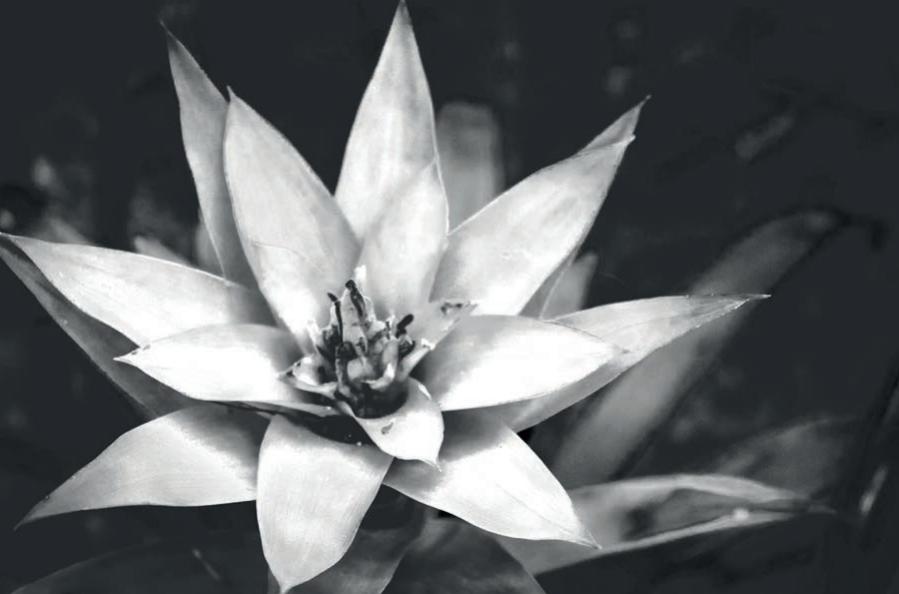
The third medicine is the choice of being light-hearted and trusting. Camus’ Sisyphus is joyful. He is filled with gladness as he takes his fate into his own hands and decides to participate out of his own choice. Camus says: “The absurd man says yes, and his effort will henceforth be unceasing.” What happens when Sisyphus walks down the hill, aware of his feet sensing the earth, before he chooses to pick up the stone once again? As my Sisyphus meanders down again, following gravity, he is in the flow. This moment gives him respite and a relaxed being with what is, now with lightness and joy. Irish poet John Moriarty tells us: ”The best way to experience grace is to surrender to gravity.”
I propose that each-of-us-as-Sisyphus choose to bring grace and gladness back into our world, despite the burden of our human condition. As we give to others with love, we begin to transcend loneliness, separation, and fear. Contemplating Sisyphus helps me to experience my various projects in the world as propelled forward by my own choice and by a growing tenderness for others

ABOUT THE AUTHOR
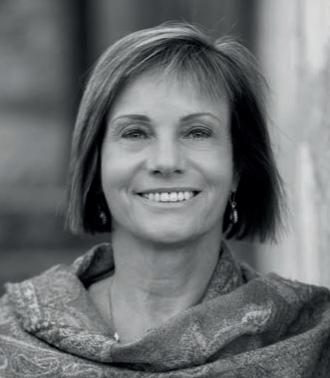 Radhule Weininger, M.D., Ph.D., is a clinical psychologist, teacher of Buddhist meditation and Buddhist psychology, founder and guiding teacher of the One Dharma Sangha, and resident teacher of mindfulness practice at the La Casa de Maria Retreat Center in Santa Barbara, California. She is mentored by Jack Kornfield in her teaching and by Joanna Macy in her interest in Engaged Buddhism. Radhule has a strong interest in the direct experience of the sacred and how this can inspire our service to others. Her book, Heartwork: The Path of Self-Compassion, with a forward by Jack Kornfield, was published in July 2017 by ShambalaPublications. .
Radhule Weininger, M.D., Ph.D., is a clinical psychologist, teacher of Buddhist meditation and Buddhist psychology, founder and guiding teacher of the One Dharma Sangha, and resident teacher of mindfulness practice at the La Casa de Maria Retreat Center in Santa Barbara, California. She is mentored by Jack Kornfield in her teaching and by Joanna Macy in her interest in Engaged Buddhism. Radhule has a strong interest in the direct experience of the sacred and how this can inspire our service to others. Her book, Heartwork: The Path of Self-Compassion, with a forward by Jack Kornfield, was published in July 2017 by ShambalaPublications. .
Skillful Means : Transform Ill Will
Your Skillful Means, sponsored by the Wellspring Institute, is designed to be a comprehensive resource for people interested in personal growth, overcoming inner obstacles, being helpful to others, and expanding consciousness. It includes instructions in everything from common psychological tools for dealing with negative self talk, to physical exercises for opening the body and clearing the mind, to meditation techniques for clarifying inner experience and connecting to deeper aspects of awareness, and much more.
Transforming Ill Will

Purpose/Effects
Ill will, negativity, aggression, even hate...these things seem like unavoidable consequences of modern life. These emotions self-perpetuate; “hate breeds hate.” Transforming negative will into positive will not only makes you happier; it empowers you to promote positive change in the world around you. Building good will doesn’t make you a pushover or a sissy. Instead, it gives you the strength to change your life and others’ lives
Method
Summary
Through a collection of techniques and gentle reminders, you can change ill will into good will.
Long Version
1. Avoid situations that promote anger and negativity. This could be as easy as making sure you get enough sleep and aren’t running on an empty stomach or as complex as cutting a toxic, negative person out of your life (at least for a time).
2. Don’t argue. Take slow, deep breaths and walk away from a heated situation. Yelling and screaming rarely resolve conflict.
3. Keep an eye on your “trigger.” Figure out what provokes you to get your claws out and examine it mindfully. You will usually find that the trigger is as much you as anything. Don’t allow yourself to justify overreaction.
4. Practice understanding. Contemporary society has disconnected us, so that we all feel like the most important person in the room, leading everyone to step on one another’s feet and to feel extremely insulted by said stepping. Despite this, most people are generally good intentioned and do not seek to insult or harm us. Remember this, and find the good in the situation.
5. Cultivate the good in you. Feed your compassion and lovingkindness and nourish your calm. These resources will only grow as you do so.
6. Be generous. Instead of feeling affronted when others seem to take from you, give freely. This may mean walking away from situations where somebody seems to have taken minor advantage of you. Remember, small things aren’t worth big anger.
7. Self-examine. Investigate minor bouts of ill will in your life, their causes and ramifications. Under this microscope, they often look smaller than they had appeared in the heat of the moment.
8. Remember that your own anger and negativity hurts you more than anyone else. It is an affliction to be overcome.
9. Allow your anger and negativity to pass through you. Fighting it will amplify it. Examine it and let it go.
10. Life is (sometimes) suffering. Accept that pain and misfortune are part of living on this planet.
11. Be realistic. It’s true: “You can’t always get what you want.” Don’t get frustrated chasing false hopes.
12. The world is not perfect nor can it be perfected. Let go of your personal perception of the ideal world and replace it with the reminder that we are good-enough human beings in a good-enough world.
13. Give your ego a break. When “I” am wounded, “I” get upset. Remember that there’s a whole world greater than you. You are important, but you are not more important than anyone else.
14. Meditate, pray, and use whatever techniques cultivate good will in your life.
15. Meet ill will with good will. Hate cannot dispel hate. Recall all the beautiful souls who prove this lesson – Martin Luther King, Jr., Gandhi, the Dalai Lama. We have much to learn from them.
16. Cultivate positive emotion. Allow yourself to be happy, content, and calm. A positive state of mind promotes good will outside the mind.
17. Communicate. Speak up for yourself and for others, while remembering that even your biggest opponent has his or her own truth. Consider the thoughts of others, and talk about problems instead of arguing about them.
18. Have faith in karma. It’s not your job to punish others. Those who deserve punishment tend to find it.
19. Don’t try to change people with anger. Cultivating ill will toward someone will almost never be the path to their eventual renewal. Especially don’t cultivate anger toward those to whom you can’t express it. It’s an exercise in futility that only leaves you feeling helpless.
20. Practice forgiveness. Forgiving others, even for grievous wrongs, is the most important step in your path to healing.
History
Most of the world’s religions offer teachings on changing ill will into good will. Whether it’s the Christian “treat others as you would like to be treated” (wouldn’t we all like to be forgiven for our transgressions and talked to with respect, understanding, and compassion?) or the Buddhist urging away from extreme emotions, the idea that anger is best when it can be turned into lovingkindness is a universal.
Note
In order to reduce the amount of ill will we unknowingly send into the world, we must begin by Realizing Intention. Examining our intentions for hateful undertones can help free us from the vicious cycle of ill will.
SEE ALSO
Fare Well
May you and all beings be happy, loving, and wise.

